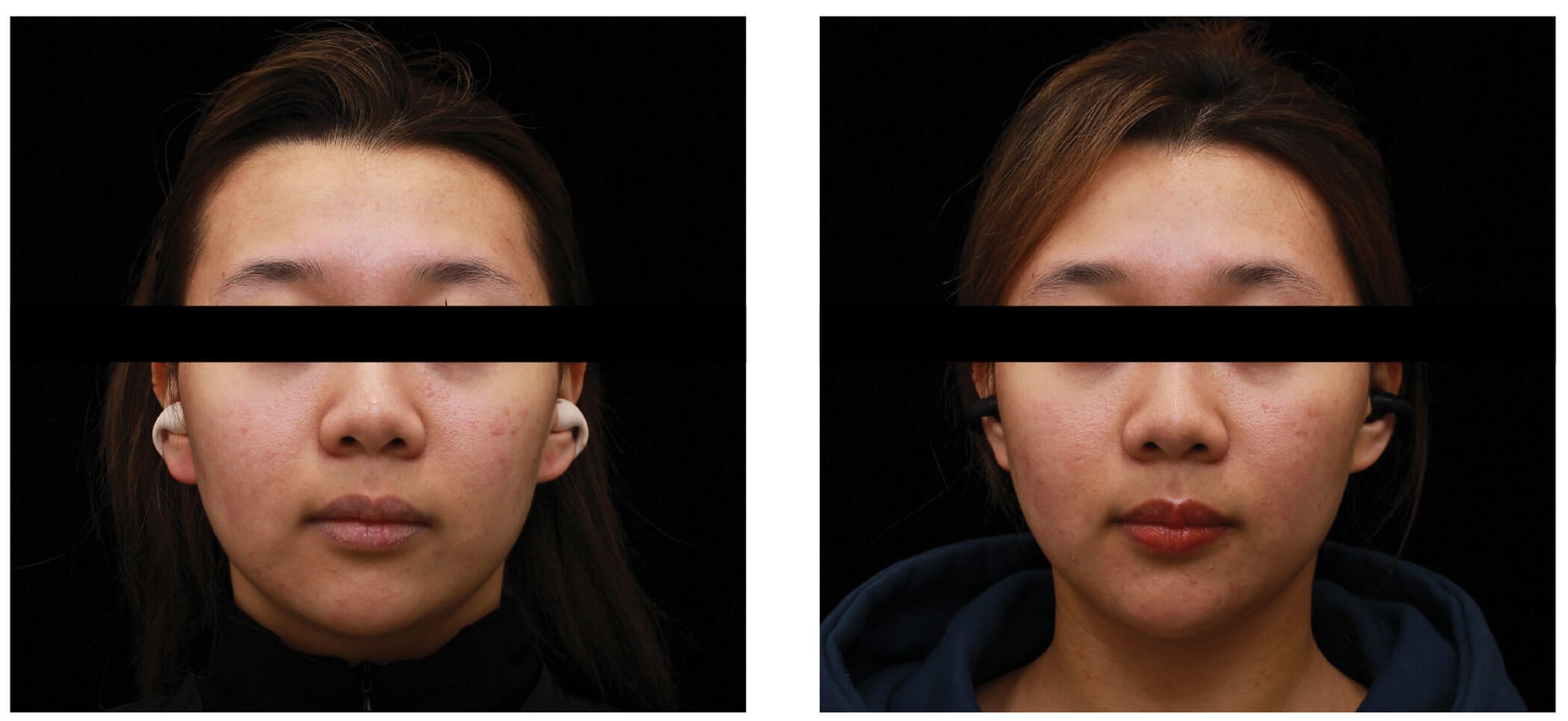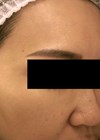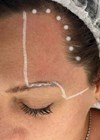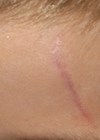The organic combination of Fotona Nd:YAG 1064nm laser second-level ultra-long pulse width piano mode and cold air can increase the penetration depth of the laser while protecting the epidermis from damage.
At the same time, the high tolerance of high peak temperature and long-term continuous heating in deep tissue is achieved, which effectively improves the reliability of fat dissolving, and provides a guarantee for the tightness of the superficial musculoaponeurotic system (SMAS) fascia layer and the fixation and lifting of ligaments.
Patient selection
The treatment is aimed at people who are not satisfied with their facial contour and are willing to undergo non-surgical facial contour adjustment or facial modification. Exclusion criteria includes:
- pregnant women
- lactating women
- people with a history of exposure to the sun within one month
- people with scar constitution
- patients with severe systemic diseases
- patients who have recently taken photosensitive drugs
or have a history of photosensitive diseases - patients with severe mental illness

Before and after one session treatment.
Treatment
The ideal treatment steps are outlined using a specific case as an example.
The first step: A 9mm spot in piano mode was used. The scanning area was 76x84mm2. The cold air cooling (Zimmer, Level 2) was added and temperature was controlled at 38–40°C. The facial SMAS fascia layer was irradiated with 1.2W/cm2 energy for three minutes to tighten the SMAS fascia layer.
The second step: The shape of the scanning area was adjusted, and the submental area and the mandibular area along the lower edge of the mandible to the posterior edge area were scanned. The treatment time was maintained at more than 15 minutes, and the temperature was controlled at 38–40°C. The energy was uniformly reached to the fat layer by volumetric heating. Under the addition of the cold air, the temperature of the fat layer can reach more than 50°C, causing high-temperature damage to the fat cell membrane and promoting the apoptosis of fat cells.
The third step: The cold air cooling was removed and the temperature was adjusted to 41–43°C. The scanning area was 76x84mm2. The middle and lower face parts, forehead, and T area were scanned and irradiated, and the dermal tissue was tightly elevated for three minutes.
The fourth step: A personalised intensive treatment was begun.
- A 9mm spot in piano mode was used. The scanning area was 33x54mm2. The cold air cooling (Zimmer, Level 2) was added and the temperature was controlled at 39–41°C. The orbicularis oculi muscle ligament and zygomatic arch ligament were scanned and irradiated with 2.6W/cm2 energy. After the skin temperature reached 39°C, the irradiation was maintained for one minute. Then, the platysma auricular ligament and platysma suspensory ligament and mandibular ligament and buccomaxillary ligament [1–3] were scanned and irradiated. After the skin temperature reached 39°C, the irradiation was maintained for two minutes.
- After the temperature was controlled at 39–41°C, we continued to scan and irradiate along the mandibular ligament and masseter skin ligament and zygomatic arch ligament and lateral orbital thickening area and temporal ligament adhesion [4]. After the skin temperature reached 39°C, the irradiation was maintained for one minute.
Because the shape of the treatment path connection is similar to the Cupid’s bow and the Cupid’s arrow, we named this enhanced treatment as the ‘Cupid Rapid Lifting’ programme.
Conclusion
After Fotona super-V light treatment, according to the patient’s condition, it is recommended to continue to strengthen the treatment for one to three times after the operation, and the treatment interval is about four weeks. Tight lifting and lipolytic shaping can effectively adjust the contour and shape the face.
After tight lifting treatment, collagen continued to regenerate, and the effect peaked at three to six months. After lipolysis treatment, adipocyte apoptosis decreased and was not easy to rebound. The treatment effect can be maintained for more than one year. At the same time as contour adjustment and face shape modification, the treatment can solve a series of facial rejuvenation problems such as skin looseness, collapse, drooping, fatness, and lines in a one-stop way.
References
1. O’Brien JX, Rozen WM, Whitaker IS, Ashton MW. Lore’s fascia and the platysma-auricular ligament are distinct structures. J Plast Reconstr Aesthet Surg 2012;65(9):e241–5.
2. Minelli L, Yang HM, van der Lei B, Mendelson B. The Surgical Anatomy of the Jowl and the Mandibular Ligament Reassessed. Aesthetic Plast Surg 2023;47(1):170–80.
3. Rakesh K, Aggarwal A, Johar M. Anatomy of aging face. Indian J Plast Surg 2007;40(02):223–9.
4. Seo YS, Song JK, Oh TS, et al. Review of the nomenclature of the retaining ligaments of the cheek: frequently confused terminology. Arch Plast Surg 2017;44(4):266–75.
Declaration of competing interests: The author has been reimbursed by Fotona, the manufacturer of Fotona Nd:YAG 1064 nm laser, for attending several conferences.
COMMENTS ARE WELCOME








